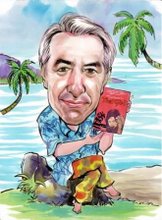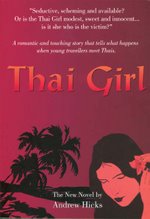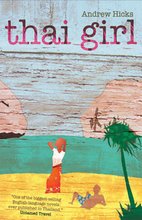
It's beauteous at the temples and you can end up with too many scarves.

It can be a long and dusty road to get there though,

And many of the outlying villages are pretty poor.

Siem Reap town itself is a pleasant base for temple hopping though.

It's full of old markets and patient faces waiting for a sale.

The people are delightful and family life revolves around the children.

To get to the temples you take a motorbike tuk tuk for the day.

This temple in the town is a gem but is untouched by the foreign hordes.

Life in the countryside goes on as a new rice crop is sown.
Isaan to Angkor Wat – Where, Why, How?
I’ve just boldly been to Angkor Wat and I’m amazed because it now takes only two hours by the new road from Thailand’s Si Saket border crossing.
So why did I want to go to Angkor in Cambodia?
Because it’s so close to home here in Surin province, because it’s one of the greatest ancient temple complexes in the world and because it haunts my mind and I just can’t keep away.
The trouble is that it’s been hard to get there as the roads have been so bad. My map shows the main access road from Aranyaprathet/Poipet to Siem Reap as ‘impassable in the wet season’ and I well remember in the dry season of January 2002 bumping along it at walking pace, the old pickup dropping down into the water courses where the bridges were broken and slowly negotiating the deep pot holes and craters. We’d paid extra to be in the cab and not outside in the dust and sun. Trouble was another six people had paid to be in the cab and with the windows jammed closed and with no aircon, it was more than hot!
In my novel, THAI GIRL, the girl in a travel agents shop in Khao San Road, (Bangkok’s backpacker centre), tells Ben and Emma about taking an open truck from Aranyaprathet to Angkor. “Road no good but very cheap. Twenty people in the back, hot and dirty… nine hours, maybe twelve. Better you fly aeroplane if you care your ass.”
That time I took her advice and flew from Bangkok into Siem Reap but suddenly everything has changed. The major routes are now in good condition and the 150 kilometres from Aranyprathet/Poipet to Siem Reap for Angkor can be done in under three hours. Another time I went from Trat to Koh Kong in Cambodia, took a boat to Sihanoukville, a bus to Phnom Penh, a boat six hours up the river and to the end of the Great Lake and then a motorbike into Siem Reap. It took five days and I’ve just got back to the Surin border in exactly two hours.
For me now living in Surin province in Isaan, there’s no more any need to travel two sides of a triangle five hours westwards to Aranyaprathet and then three hours east again to Siem Reap. These great temples lie directly to the south of us, perhaps only 100 kilometres from the Thai border and now it’s possible to get to them that way. Or is it?
I’ve found it extraordinarily difficult to find out about the roads, but having just gone in a circle, crossing the border from Surin, going anti-clockwise to Angkor and returning to Si Saket, I’ll tell you what I’ve learned.
The major border crossing across the massive natural barrier of the Dongrak Mountains in southern Isaan has always been from Surin’s Chong Jom to O’Smach in Cambodia. Here on the Thai side there’s a huge market and a four lane highway that sweeps you smoothly up to the border. As you cross, there’s a glitzy casino and a big resort and it’s all horribly slick and impressive.
After that though as you enter Cambodia, it’s all downhill in more ways than one. The unsealed road plunges down the Dongraks in a series of bumpy hairpins, the dust billowing and the car plunging wildly. It’s hard to think this moonscape of a road can be passable in the wet season, except with four wheel drive. The next 100 kilometres or so is then a reasonable dirt road, before it reaches the Poipet road and you turn left in a dog leg eastwards to Siem Reap.
To promote international friendship and cross border trade, a new route has now been developed from Chong Sanggam in Si Saket province with substantial Thai money being spent on good sealed roads. On Thailand’s Route 24 at Ban Lalom just west of Phusing the big blue signs now show the turn off to Angkok Wat. The road across the border on both sides is so new, it probably doesn’t appear on your map but it does exist and is well signed from Route 24.
Once in Cambodia the road is direct and fast and coming back and completing our circle we covered the fast road from Siem Reap to the border in exactly two hours. The only problem is that, unlike Chong Jom, the border crossing itself is totally undeveloped, a dusty road through the dry jungle with a few barriers, push carts and portakabins.
Using either entry point, you’ll have to be dropped at the border as leaving your vehicle there would be more than risky. You also ideally need to have booked a Cambodian car to meet you and to take you to Siem Reap, though I’m not sure about mobile phone coverage across the border. (My well-connected friend had booked a car and our 4WD arrived twenty four hours early just in case!)
We were charged 2,500 baht by Keo Sotheara for a comfortable return trip from Siem Reap to Chong Sanggam. He is near Chong Sanggam at Anlong Veng and speaks good English. His card shows (855) 1267-7544 (Cambodia phone) and 086-343-7091 (Thailand phone).
Alternatively Chan Sovan of Siem Reap is on 012-843992 or (855) 92-89-0005 (though another card says 374-374 prefixed either by 011 or 012 or 013 or 090. Confused? So am I!).
We used a nine seater mini-bus to take us round the temples and between the three of us paid US$25 per day for the vehicle. (Dee, our delightful driver was great value too.) See www.angkorguide.asia/phansy and rosphansy@gmail.com. (Email him perhaps and ask him to send a car to Chong Sanggam?) See also www.siemreaptaxidriver.webs.com. Sorry if I’m a bit vague on all this as I didn’t do the phoning for cars.
Alternatively, on crossing the border at Chong Jom, there could be some cars waiting for business or not far away. At Chong Sanggam it would also be possible to get someone to call a car from Anlong Veng (twenty minutes away), or even from Siem Reap. People are always friendly and helpful especially when it opens wallets.
One small thought… returning to Chong Sanggam by car, arrange to stop off at the exquisite small temple of Banteay Srei and also at Kabal Spean to see the ‘River of a Thousand Linggas’ as they are en route and well out of town. (For Banteay Srei, you’ll need to have bought an extra day on your temple access card, available at the main entry to the temple park. It’s US$20 per day, US$40 for three days and US$60 for seven days. It seems you can opt for the days not to be consecutive… six days running could cause total exhaustion.)
To get round the temples most visitors use a tuk tuk which is a motorbike towing a covered trailer that seats two in comfort and costs US$10 to 15 per day according to how far you want to go.
Pick up a “Siem Reap Visitors Guide” (‘Canby guide’) in a hotel or restaurant when you arrive. See www.www.canbypublications.com. It’s a remarkably good free guide book with coverage of the history of the Khmer empire and of each temple, as well as the usual comprehensive tourist information on everything you can possibly think of.
As to accommodation, there’s a huge range of choice from US$5 a night. We paid US$15 a night (yes, 500 baht!) for the Reaksmey Chanreas Hotel which is on the right at the bottom end of Sivatha Boulevard, the main drag in town. It had beautifully appointed rooms with fridge and TV, all to a very high standard. There were excellent baguettes and breakfasts and pleasant staff whose aim in life is proving that cleaning rooms and serving the ‘barang’ is the most fun thing you could ever do. Highly recommended! Most of the expensive hotels are stuck out on their own but this one is right between the old market and the tourist night market and all that the town has to offer.
And Siem Reap certainly has a lot to offer. Ten years ago when I was first there, it was a dusty little provincial town trundling with ox carts and amputees, but now it’s a dusty big town with many attractive bars and restaurants and more cotton scarves for sale per acre than anywhere in the world. Something of its innocence has been lost though but that’s ‘progress’’ and at least it has been well done. If only the Thai tourist traps could manage a fraction of the style and good design that seems to be second-nature to the Cambodians.
As for money, my Kasikorn card produced US dollars from an ATM machine in town and I didn’t have to use it too often. Thai baht are widely accepted but when spending either currency you end up with handfulls of Riel as change which at 4,000 to the Dollar is a pain. With three currencies and a pocketful of zeros, it’s exceptionally hard for the numerically challenged such as me.
After some great experiences, on getting back by car to Chong Sanggam, I called Cat and we arranged to meet at our favourite Thai restaurant by the lake. The pickup we hired to take us there from the dust and mess of the border then ran over Peter’s toes as we were loading our stuff into the back, but that was the only disaster in the whole week.
If I now review the best weeks of my life, this one would have to be high on the list. Angkor and all that the ancient Khmers have left behind is truly magnificent.
My next posts on this blog will tell you all about what we did, including seeing the ‘lost temple city’ of Banteay Chmar, wading through the swamp to the temple on the island in the middle of the Lake, photographing a thousand devatas at Angkor and meeting ‘Miss Saigon’ in the Zanzy Bar in Siem Reap. Well some of it anyway!
It was non-stop action and now I really think I need a holiday.
Finally, do please post a Comment with any questions on all this and with additional info (or corrections) that could be helpful, especially for other Isaan resident travellers.
There’s nothing much to do around here in my Surin village, but I’ve just discovered that one of the world’s greatest religious monuments is now only a few hours from home. It wasn’t that easy to find out though.
Andrew Hicks The “Thai Girl” Blog December 2009





7 comments:
Andrew, thanks for all this and I look forward to reading more about what you did. I was beginning to think I didn't really want to go to Cambodia but you have changed my mind.
You left your vehicle at the border. Is it possible to take a Thai-registered vehicle across with the 'car passport' do you know?
Andrew - Somewhere I've always wanted to go and you've now made it more accessible.
I tried to track your route on Google Earth and I reckon I've got the Chong Sanggam crossing to Anlong Veng but for the life of me I can't find Chong Jom. Is there any towns near Chong Jom that would help me find it?
Google Earth shows Pol Pot's grave being just over the border on the road to Anlong Veng. Hardly a tourist attraction I suppose.
Lawrence,
I don't think I saw a single Thai registered vehicle in Cambodia which must be indicative. Thai cars would probably be stolen or vandalised, as was the Thai Embassy in Phnom Penh a few years back.
Incidentally I didn't risk leaving my pickup at the border as I am not aware of any secure parking (as there is of you want to go into Laos at Chong Mek).
Ed,
Chong Jom is reached via route 214 from Surin town and is just south of Kap Choeng. There is a very obvious northwards blip in the border at this point.
I saw a rough sign saying 'Pol Pot cremation'approaching the border from Anlong Veng but thought it was probaby a fake. Interesting! I do know that there is a grave and shrine to one of his sidekicks, Ta Mok in ornear Anlong Veng. Apparently here in Khmer Rouge country he is still highly regarded by some people.
Do go. It's one of the world's greatest sites.
Andrew
Andrew, thanks for this intresting report! I am going (for the second time) to Siem Reap/Angkor in March 2010. Of course we will go to see Angkor Wat, Angkor Thom/Bayon and Ta Phrom. Any recommendation off the beaten track?
Thanks for the great guide.
Would you recommend this route for a cycling journey?
Cycling to Angkor this way? Well, it takes all sorts!
Frankly, I wouldn't recommend it. Entering from Surin you'd face an indirect route of rough roads and be constantly enveloped in dust.
Entering from Si Saket, you'd have a long fast road over barren plains that would be more painful than interesting.
Accident and security issues are relevant too. There'd be nobody to help you.
Maybe you'd love it, but better to rent a bike in Siem Reap.
Andrew
Sven,
The answer you your question is found in my next blog article.
Banteay Chmar! Just amazing!
Andrew
Post a Comment